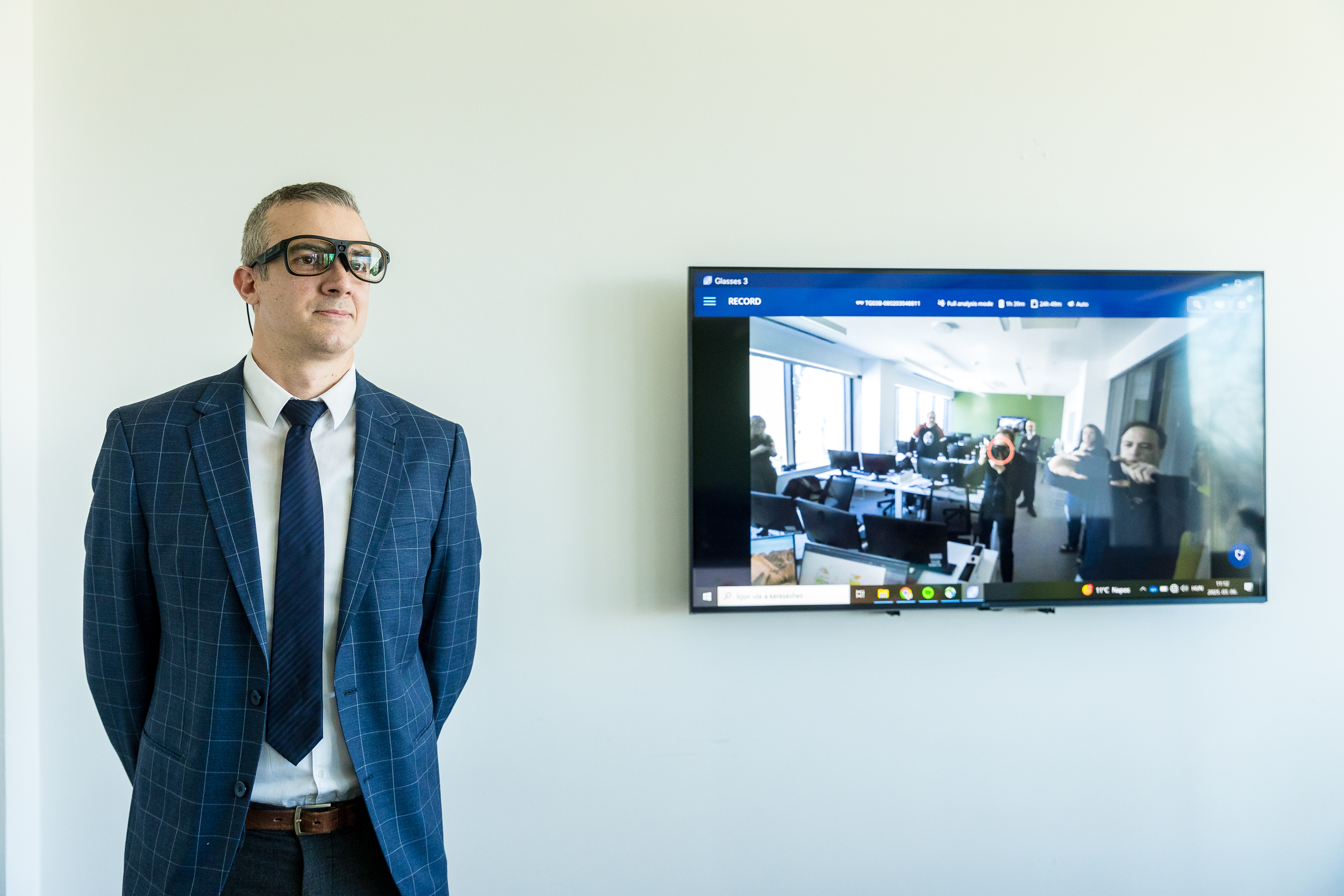The Eye-Tracking Technology Analyzes Human Behavior at Corvinus

On March 6, the lab’s professional background was introduced to the press by Ákos Varga, Head of the Corvinus Department of Digital Marketing, and Alexa Rudolf, a Corvinus PhD student. Varga highlighted that eye-tracking technology, also known as attention computing, delivers real-time, reliable, and robust data for human behavior research.
The new lab can support the design of marketing materials, analysis of consumer preferences, product and packaging development, and user experience (UX) research. Additionally, it contributes to university education by assessing the effectiveness of teaching materials. Its applications extend to any field that involves measuring and interpreting visual attention and cognitive processes, making it valuable for research in leadership, marketing, psychology, and sociology.
With this lab, Corvinus gains not only cutting-edge technology but also new research opportunities, countless collaborations, and an exciting learning environment for students. This research facility marks a milestone not just for our university but also for Hungarian innovation, as it can help meet market demands as well,
– said Ákos Varga.
Located on the Gellért Campus, the lab is unique in the region in terms of capacity. It houses ten Tobii brand monitor-mounted eye-tracking devices—designed to measure reactions to websites, images, and creative content—as well as a wearable headset, which can track the attention of test subjects in motion, such as shoppers.
Guests at the event had the opportunity to test the eye-tracking equipment, while faculty members demonstrated various ways to visualize the collected data. The ever-expanding neuromarketing toolkit at Corvinus will be utilized for both scientific and educational purposes by the NEDIMARC (Neuro- and Digital Marketing Research Center).